Are you wanting to bring greenery to your indoor or outdoor spaces, but not sure which ones will suit your busy lifestyle? Perhaps you are really wanting to care for plants but have little time to do so. In this beginner guide, I will run through the best potted plants for those time-poor, less than green-fingered among us but who still want the benefits that real plants can bring. I have featured my favourite easy-to-care for plants with tips on how to care for potted plants and the best places to get plants on a budget.
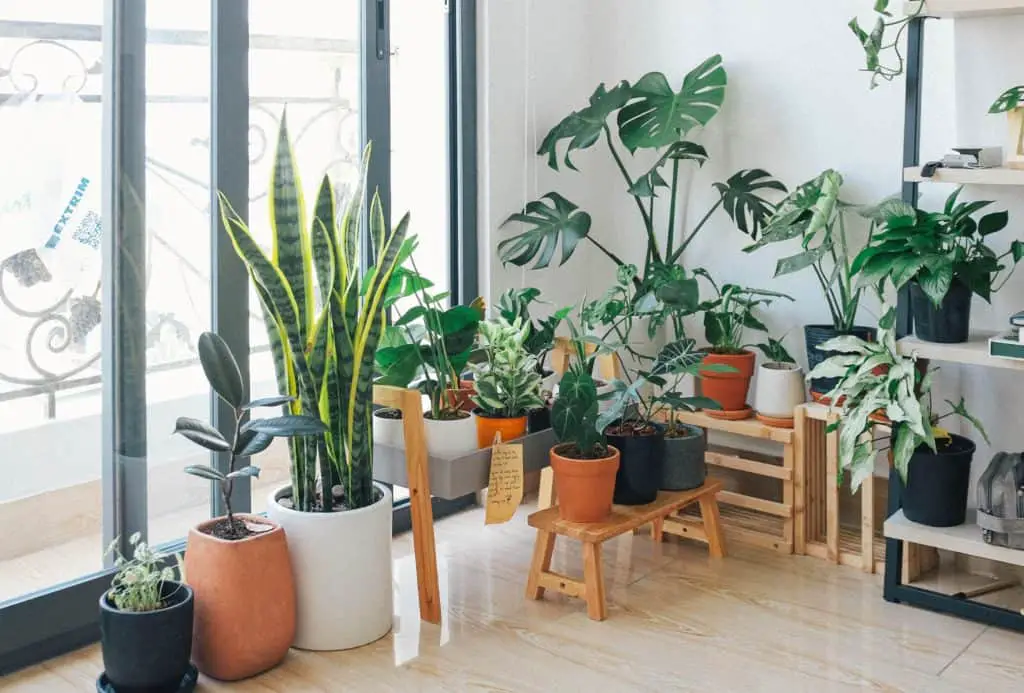
What are potted plants?
Potted plants are plants grown in a container or pot rather than in the ground. Potted plants are ideal for patios and small gardens as they are contained and do not spread as much as if they are in the ground. They are also perfect for places where the weather swings from hot summer to cold winters as they can be moved to shelter from the sun and the frost. They can also be located indoors or outdoors. A downside of potted plants is that they may require more watering than those in the ground but I believe the benefits far outweigh the negatives.
What are the benefits of potted plants?
The benefits of potted plants are that they can brighten up any indoor or outdoor space. They can be added to small spaces and areas such as patios and verandas to add greenery and soften the space.
Potted plants can be moved around to maximise sunlight during the winter and shade during the summer and are great for renters and those that move around a lot as they can be moved with you.
According to a NASA study conducted in 1989, keeping potted plants indoors can have health benefits such as being able to purify the air inside your home by removing toxic chemicals such as formaldehyde (often found in products made from pressed-wood such as MDF, plywood or particle board), Trichloroethylene (often used as a solvent in adhesives, lubricants, paints, varnishes, paint strippers, pesticides, and cold metal cleaners) and benzene (mostly found in petroleum and can be found in homes with attached garages, those close to petrol stations and homes where there are smokers).
It is also said that adding a house plant to your home office can improve productivity and focus and reduce stress levels.
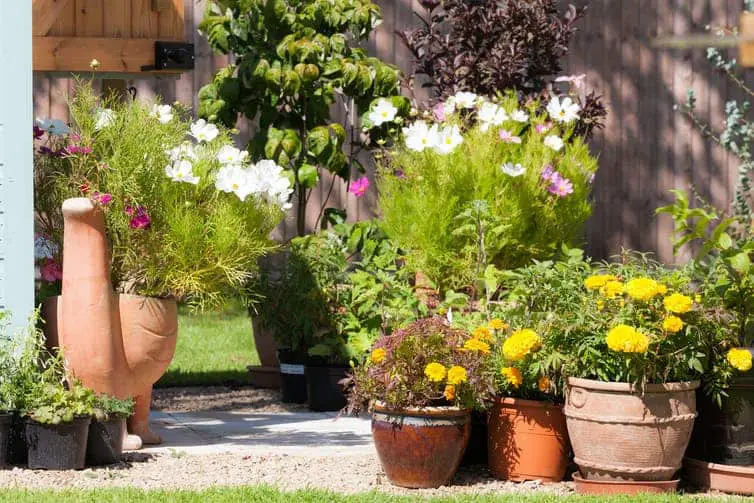
How to care for potted plants
I will be honest, I do not have an awful lot of time for gardening, however, I do love a good-looking plant both indoors and outdoors and the associated health benefits they can bring; this is where the easy-to-care-for plants come in. I have created a list of top tips to help keep potted plants alive which can be found below and a list of the best easy-to-care-for plants:
- Ensure that you choose a good pot with adequate drainage for the plant. There are different types of pots on the market and which one to choose can be confusing. The type of pot will depend on what will be beneficial to the specific plant you want to put in it and where you want to put it.
- A drainage hole at the bottom of the pot is a good way to allow excess moisture to escape. This is usually best for outdoor plants. If you use pots with drainage holes inside, a saucer under the pot can catch the excess water but will mean the plant may be sitting in wet soil. If you accidently give the plant too much water, ensure you get rid of the excess in the saucer if the plant does not like wet soil. Some plants like wetter soil than others. You can check the potted plant descriptions below for more information on what plants like.
- Terracotta pots are good for moisture regulation. Terracotta pots are more porous than plastic and can therefore help to regulate the air and moisture content in the pot reducing plant rot and associated diseases.
- Putting some gravel or stones at the bottom of the pot before you add soil is great to aid drainage and ensures the plant does not sit in soggy soil at the bottom of the pot where the moisture will collect. No-one likes a soggy bottom. If the plant sits in soggy soil, this can cause the plant to rot.
- Using mulch (sugar cane mulch, bark, straw, etc) on top of the soil around a plant can help the soil to retain moisture and stop the soil from drying out. It can reduce the amount of water needed by up to 60%! Using mulch can also help to protect the plant from weeds planting themselves in the soil and stealing the nutrients.
- Some plants prefer it if the soil dries out a bit before watering. One way you can tell if your plant needs watering is to feel the top of the soil. If it feels dry, it needs watering. If it is still moist, leave it for another couple of days. To avoid watering your plant too much, stop when the water pools on the surface of the soil or runs out of the bottom of the drainage hole at the bottom. Over-watering or under-watering can result in a sad plant and eventually a dead plant, so even though I love easy-to-care-for plants, some TLC is still required.
- Misting is important for tropical plants to ensure they get the humidity they require. Spray a fine mist using a plant mister or spray bottle over your tropical plants once or twice a week. Try not to leave a tropical plant directly underneath an air conditioning unit vent or a heater as this will dry them out too much causing their leaves to shrivel and brown.
- The best time to water potted plants is in the early morning between 5am and 9am. They can also be watered later in the evening, especially during a hot summer but during winter time it is preferable to water them early so the soil can dry out before dark. If the soil is left moist around the plant for too long (overnight), it can cause the plant to rot, become diseased and it attracts insects. Try not to water in full sun as most of the water will evaporate before it is absorbed by the roots. It is now known that watering in full sun does not scorch the leaves but it is still not water efficient.
- Using recycled rainwater to water your plants is a great way to reduce the demand on drinking water and shrink your water bill. Consider investing in a rainwater tank with a tap to fill your watering can or connect it directly to an irrigation system.
- If you are someone who likes to travel regularly or often forgets to water their plants, there are products such as these watering bulbs that will release water into the soil when needed.
- If you want a plant to grow larger and more quickly, double the pot size it is currently growing in. A recent study showed that doubling the pot size of a plant increased a plant’s size by 43% and the rate of growth due to an increased rate of photosynthesis. They found that it is likely a plant can sense the size of the pot using its roots.
Examples of easy-to-care-for potted plants
There are many different types of plants that are best suited for pots. If you’re anything like me, I don’t have a lot of time for gardening so here are some examples of the best, easy-to-care-for plants suitable for pots:
- Peace Lily (Spathiphyllum)
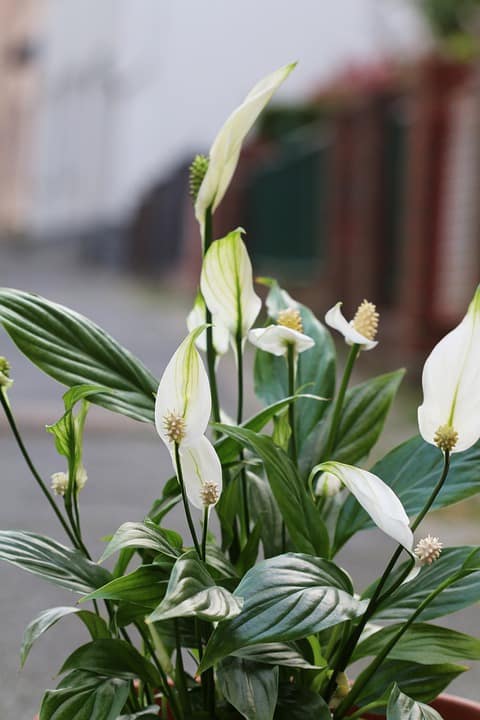
These beautiful plants with glossy leaves can be kept outdoors or indoors. They prefer a warm but shady spot if outdoors or medium to low light if kept indoors away from direct sunlight as this can burn the leaves. They are more tolerant of under-watering than over-watering so ensue the soil dries out between watering. You could even wait until the plant droops a little before watering. They are great for purifying the air inside your home and so are great for a bedroom, living room or office space. To keep the plant healthy and leaves glossy, clean the leaves with water once a month or so. You can place the plant in a bath and spray with water, rinse in the sink or just wipe over with a damp cloth. This helps the leaves to process sunlight more effectively. Peace lilies can live for around 3 to 5 years. The peace lily can be divided at the roots to create separate plants.
- Golden Cane Palm (Dypsis lutescens)
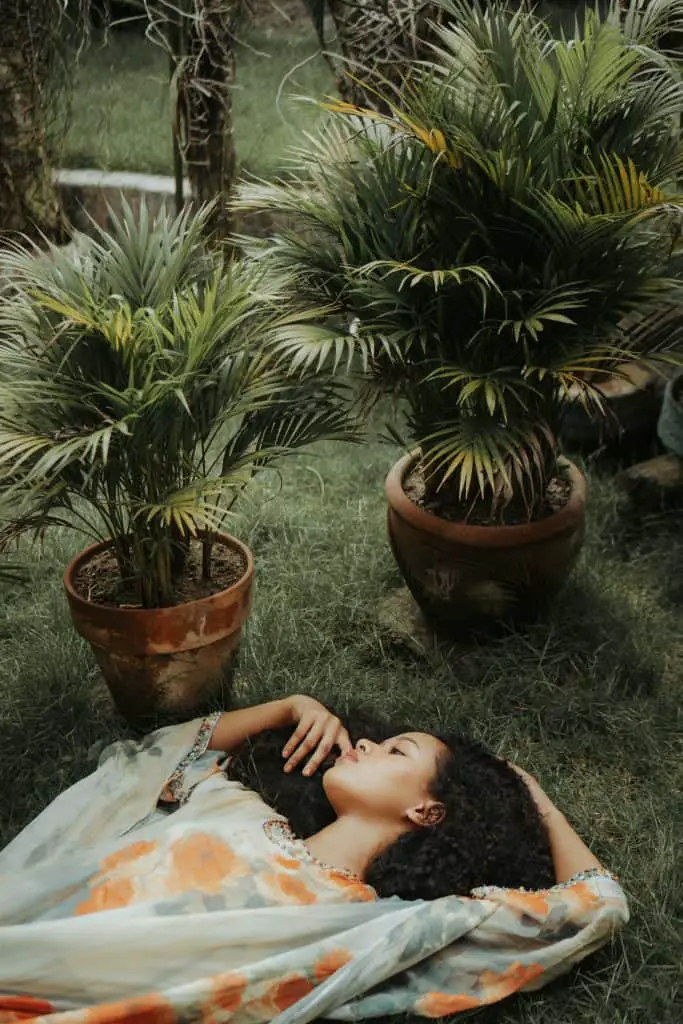
A tall tropical palm that can grow as tall as 10m high! It is also known as the butterfly palm and it grows several golden canes rather than one large trunk. The golden cane palm can be kept indoors or outdoors and is easy to care for. Keep it in a full sun position outdoors or bright spot inside ensuring it has some shade during the hot summer months to avoid the sun burning the leaves. As the golden cane palm is a tropical plant, it prefers high humidity so regular misting is required. Water the palm when the soil feels dry and avoid placing the plant directly under an air con vent or heater. Any dead or yellow leaves can be removed to keep the plant looking good.
- Fiddle-leaf fig (Ficus lyrata)
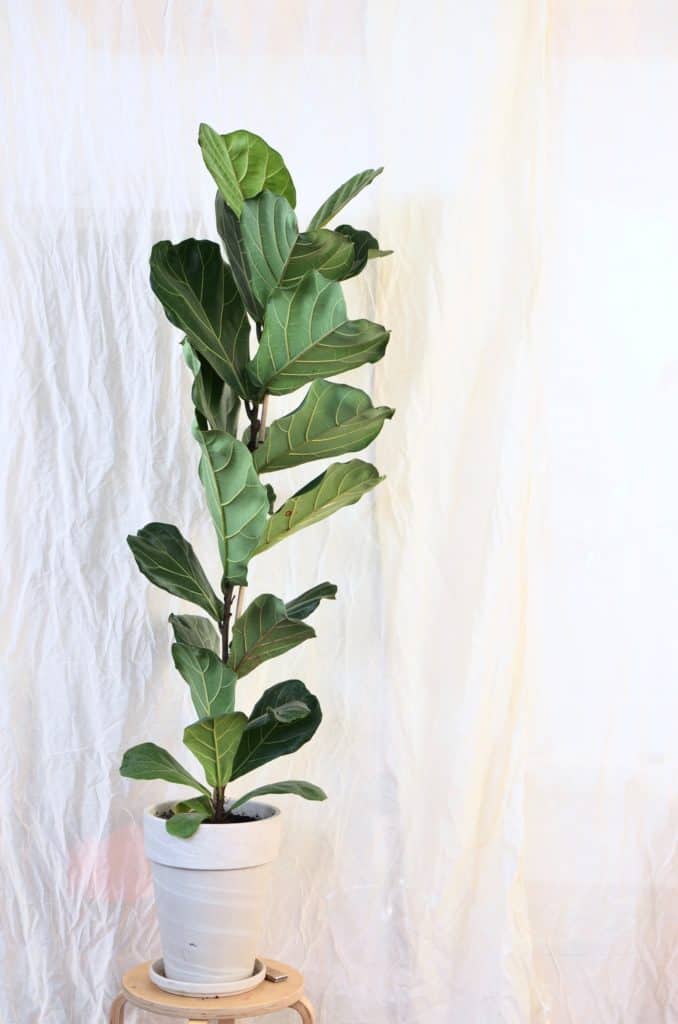
This tropical West African plant is one of the larger house plants which can be a statement piece in a home. Plant in a floor-standing pot to ensure you can showcase its true potential. It can also be placed outdoors in a shady position and is great for beginners. Originating from the rainforest, the fiddle-leaf fig has beautiful large, glossy leaves and can grow up to 15m (50ft) tall if outdoors (!) or 3m (10ft) tall indoors. Trim off any dead leaves to keep the plant looking its best. They can live for around 25-50 years. Water when the soil feels dry and they can benefit from misting every few days as they like high humidity. They tend to grow towards the light, so turn the plant occasionally to avoid it growing lop-sided. Like the peace lily above, to keep the plant healthy and leaves glossy, clean the leaves with water once a month or so. You can place the plant in a bath and spray with water, rinse in the sink or just wipe over with a damp cloth. This helps the leaves to process sunlight more effectively.
- Geranium (Pelargonium x hortorum)
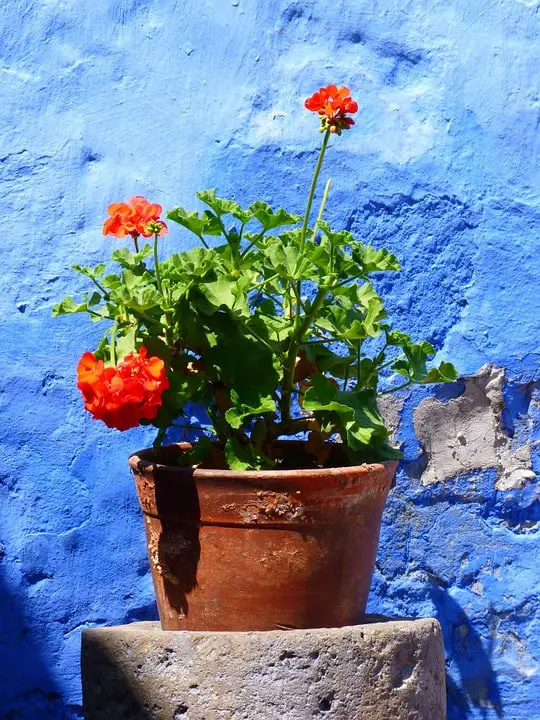
Geraniums can be grown indoors or outdoors and their stunning colours are great for being displayed in hanging baskets. They like a sunny spot and are relatively easy to care for. Dead heading the spent flowers can encourage new blooms. They can be grown easily from cuttings which makes them a budget-friendly plant. The typical lifespan of a geranium is around 40 years with the flowers lasting around 2 years at a time. Water when the soil looks dry which can be everyday if outdoors during a hot summer.
- Bird of Paradise (Strelitzia reginae)
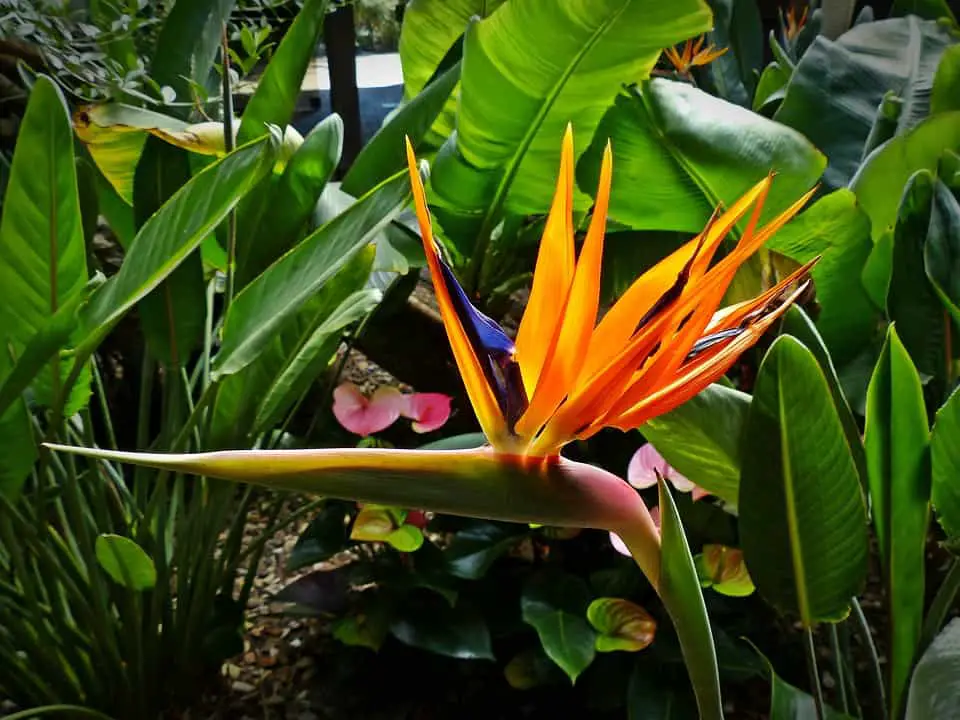
A tough tropical plant with striking exotic flowers which resemble a colourful birds head (hence the name) and banana leaf type leaves. The bird of paradise can be placed in a warm, sunny spot but will tolerate some shade and is easy to care for requiring little maintenance. If outdoors, they require watering during very hot and dry weather but can thrive on neglect as they will self-water. Indoors, they will require watering when the soil is dry. The bird of paradise can grow to around 1.2m high and 2-3m wide with age if outdoors and they can live for around 25 to 50 years. The flowers usually last around 1 to 2 weeks. Removal of dead or damaged leaves and dead flowers ensures your plant looks tip top. The plant grows in clumps and can be divided to form two or more plants with a spade.
- Jade plant (Crassula ovate)
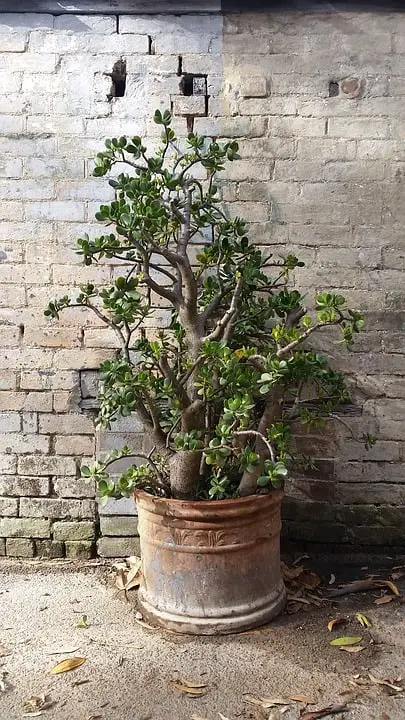
This tropical succulent originating from southern Africa, can be kept indoors or outdoors and is very sturdy and easy to care for; just make sure you do not over-water it and wait until the soil is dry between watering. Place it in a sunny position and it can live for around 75-100 years! The jade plant can easily be grown from cuttings. Be warned, this plant is toxic to cats, dogs and horses so be cautious if you keep any of these animals.
- Missionary Plant (Pilea peperomioides)
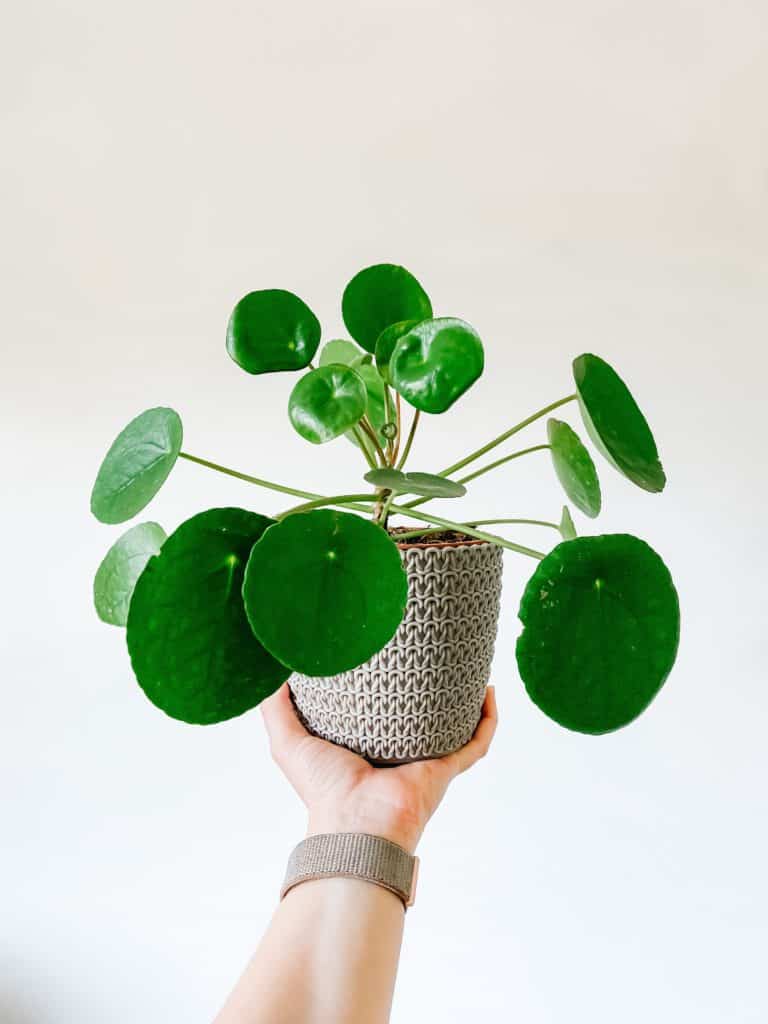
Also known as Chinese Money Plants or Pancake plants they have a striking appearance. They are mostly kept indoors and love lots of light (but not direct sunlight which might burn the leaves). The Missionary plant originates from China and was brought to Norway in 1946 by a Missionary (hence the name) called Agnar Espegren. The plant has been grown from cuttings since then being passed between friends which makes the plant quite hard to find outside of China. The main plant can grow ‘babies’ so can easily be propagated if you can find someone with a mother plant. They can live for around 10 years.
- Snake Plant (Dracaena trifasciata)
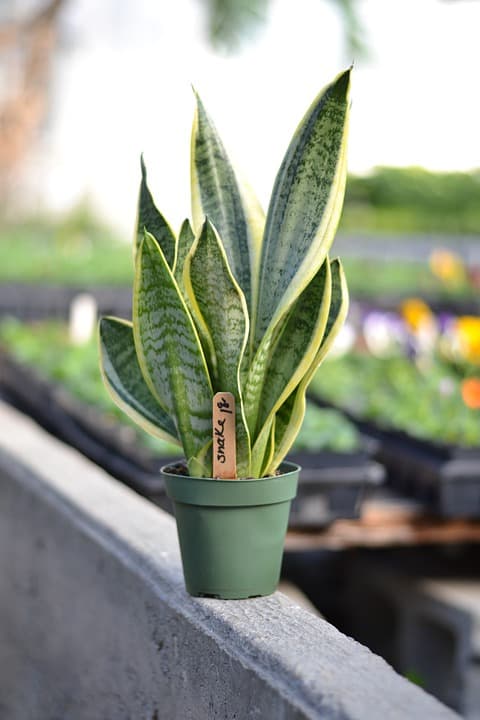
Also known as ‘Mother-in-Law’s tongue’, this easy-to-care-for tropical plant requires little watering and requires very little maintenance. It is the perfect plant for beginners, and it has bonus air purifying properties if kept indoors, removing formaldehyde, trichloroethylene, and other toxins. They typically live for around 10-15 years but can live for as long as 25 years. The snake plant can be grown from cutting or divided at the roots to form separate plants.
- Aloe Vera (Aloe barbadensis miller)
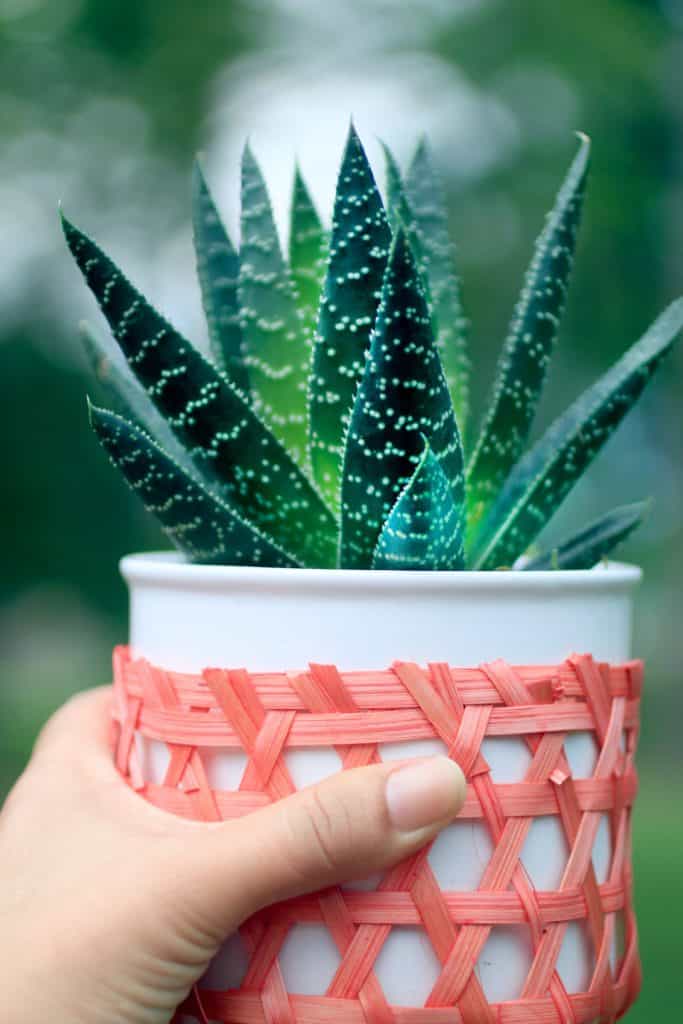
An easy-to-care-for tropical succulent, aloe vera likes a bright position with indirect sunlight. They can live for between 5-25years with smaller plants having a smaller lifespan. Being a desert-native, it also does not mind if you are a forgetful waterer [hands-up over here]. Like the Missionary plant above, aloe vera plants grow ‘babies’ so can be easily obtained on a budget if you have a friend with a mother plant. A bonus of aloe vera is the gel found in the leaves can be used to soothe and heal the skin, especially if you have sunburn.
- Spider plant (Chlorophytum comosum)
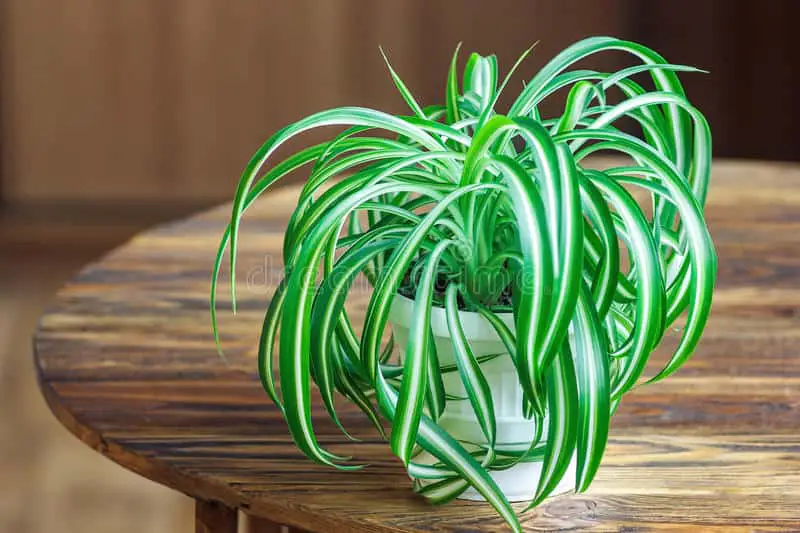
A great plant for beginners, spider plants are super hardy and require little maintenance. They can live for up to 20 years. Spider plants like a bright position but not direct sunlight as this can burn the leaves. They grow spiderettes which hang down from the mother plant like spiders in a web (hence the name) which means they are very easy to obtain on a budget if you have a friend with a mother plant. Just cut the babies from the main plant and re-plant them in new soil and away you go. They also provide great health benefits as they remove harmful chemicals such as formaldehyde (often found in MDF and particle board) and carbon monoxide from the air.
Best places to get potted plants on a budget
The best places to get potted plants are:
- a friend with a mother plant of a plant that can be grown from cuttings or babies.
- your local garden center,
- Bunnings,
- local sellers,
- garage sales (often people sell their potted plants if they are moving overseas and cannot take them with them for example),
- or a Buy Nothing Project (a community-based Facebook group to share gifts).
Budget friendly Plant Propagation:
How to grow a plant from cuttings
Some plants can be grown from taking a cutting of a main plant, placing it in soil or water until it grows roots and can be transported to a pot. Woody plants such as lavender, rosemary and roses can benefit from dipping the root end of the cutting in to rooting hormone to encourage root growth. This can be purchased from a garden center. Early morning is the best time to take a cutting as this is when plants tend to hold the most moisture. If not potting the cutting straight away, keep them moist in a plastic bag wrapped in a damp paper towel.
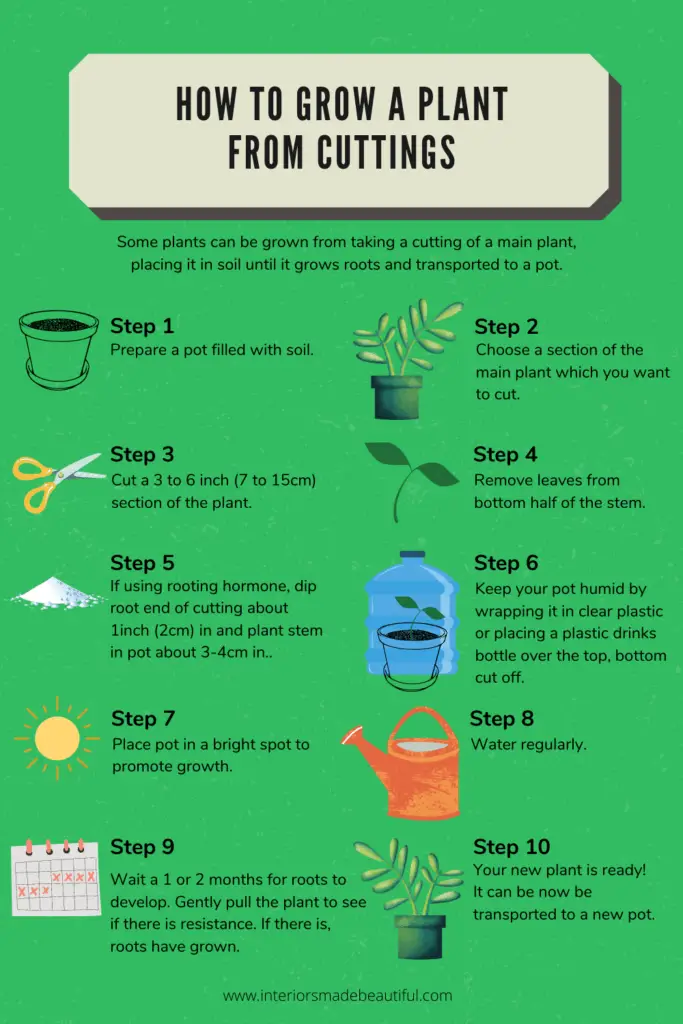
How to grow a plant from cuttings in water
Succulents and soft-stemmed pants such as geraniums can be grown from cuttings placed in water rather than soil to help them establish roots. The process is similar to that of placing cuttings in soil but even easier and you can see the roots growing.
- Prepare a jar full of clean water.
- Choose a section of the main plant which you want to cut.
- Using sharp scissors, pruning shears or a knife, cut a 3 to 6 inch (7 to 15cm) section of the plant, remembering which way up it needs to be planted for roots to grow.
- Remove leaves from bottom half of the stem.
- Place cutting into water pot, root side down.
- Place pot in a bright spot to promote growth.
- Change water every two to three days to ensure it stays fresh.
- Wait a month or two until roots have developed.
- Your new plant is ready to keep growing and can be transported to a new pot.
How to divide a plant
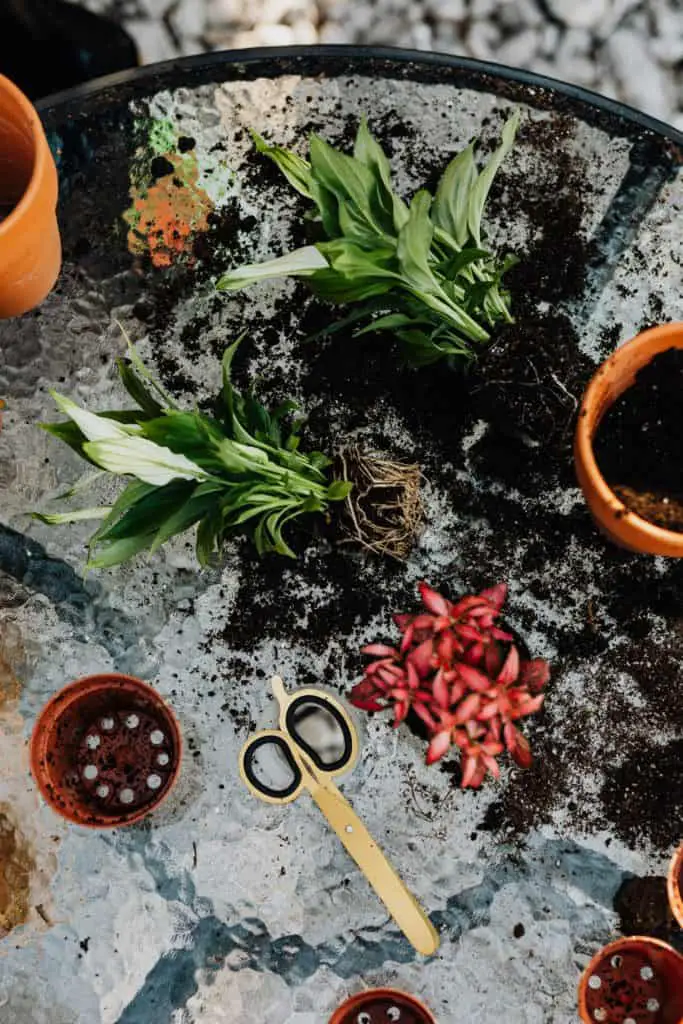
Some plants such as Snake Plants, Peace Lillies and Bird of Paradise can be divided up into several plants.
- Dig up mother plant using a spade or fork.
- Remove any loose soil from around the roots.
- Carefully divide the plant by either using your hands, a spade or sharp knife. If the plant is proving a bit difficult to separate, using two forks placed together back-to-back and pulled apart can help to separate the plant. Ensure the new plants have a good proportion of roots and shoots.
- These new plants can be potted up separately.